Since the college’s founding in 1947, student veterans have played a foundational role in California State University, Sacramento’s history, but the level of administrative and academic services provided by campus leaders to help student veterans was dependent on how financially beneficial they were to the school. This changed during the Post 9/11 era.
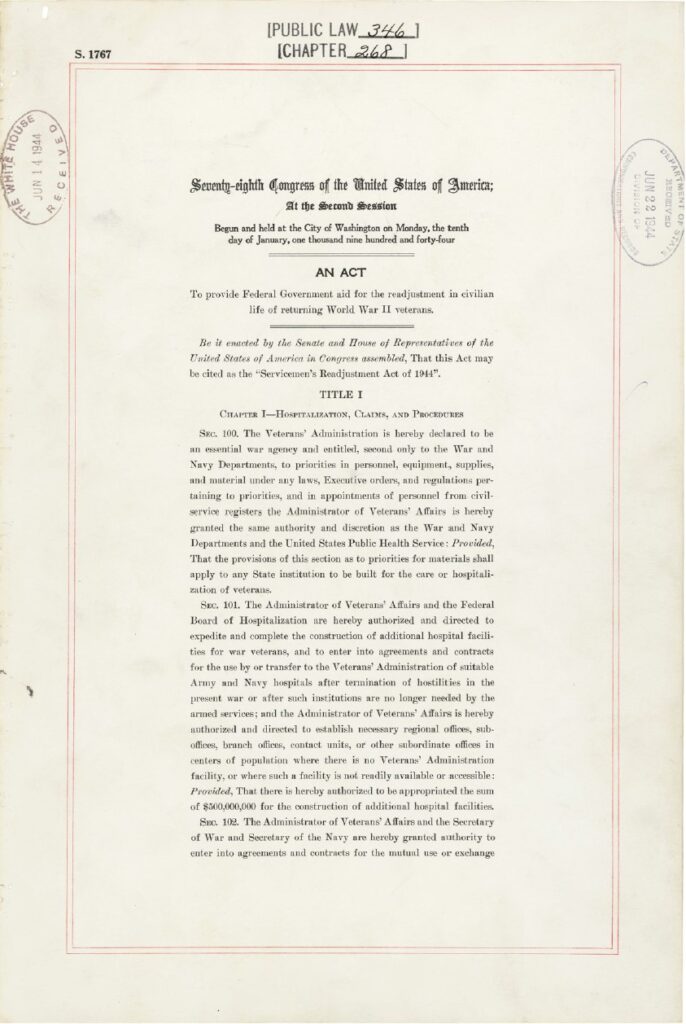
The Servicemen’s Readjustment Act of 1944 was signed by President Franklin Roosevelt. The law, popularly known as the GI Bill, authorized and appropriated money to support the over 16 million service members that were transitioning back into civilian life after fighting in World War II. The associated programs and benefits this law created included the construction of facilities for veterans such as hospitals, unemployment benefits, job placement services, guaranteed loans for purchasing homes, farms, or businesses, and up to four years of education and training benefits.
1947 saw the largest influx of student veterans enrolled in higher education across the country, 1.15 million. Thus the creation of Sacramento State College (Sac State) in that same year coincided with this wave of new student veterans. From its inception in 1947 through the 1950s, Sac State’s fiscal health was dependent on student veterans. California State University, Sacramento: The First Forty Years 1947-1987, notes that “a substantial proportion of the college’s budget in the early 1950s consisted of direct payments from the Veterans Administration (VA)” (Craft 1987, 24).
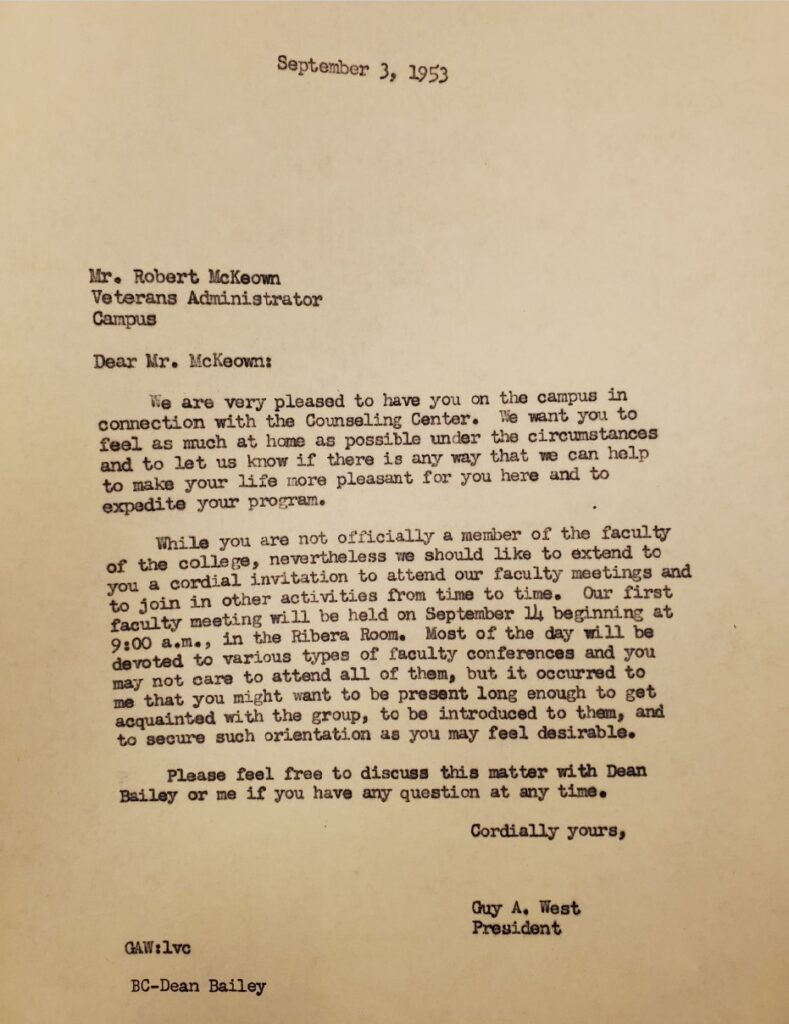
School President Guy West prioritized veteran services as a key effort of his early administration He hosted government employees from the VA’s Sacramento office to work on campus to directly help student veterans navigate the GI Bill paperwork morass. Additional initiatives President West implemented are creating the Hornet Bookstore Foundation, later named Hornet Foundation, to provide services, raise money, and disperse funds that directly benefited the college and students, he successfully recruited veterans eager to use their new education benefits, and school professors taught courses to active duty service members at local Air Force bases (Mather, McClellan, Beale).
As original GI Bill education benefits started sunsetting in the mid-1950s, the number of student veterans in higher education fell precipitously. Over the next two decades, Sac State’s student population reflected this national trend with its percentage of student veterans dropping fast while the school’s overall student population grew rapidly. Sac State’s focus on veteran services slowly went away as well, with the exception of providing basic certification of veteran education benefits for the VA.
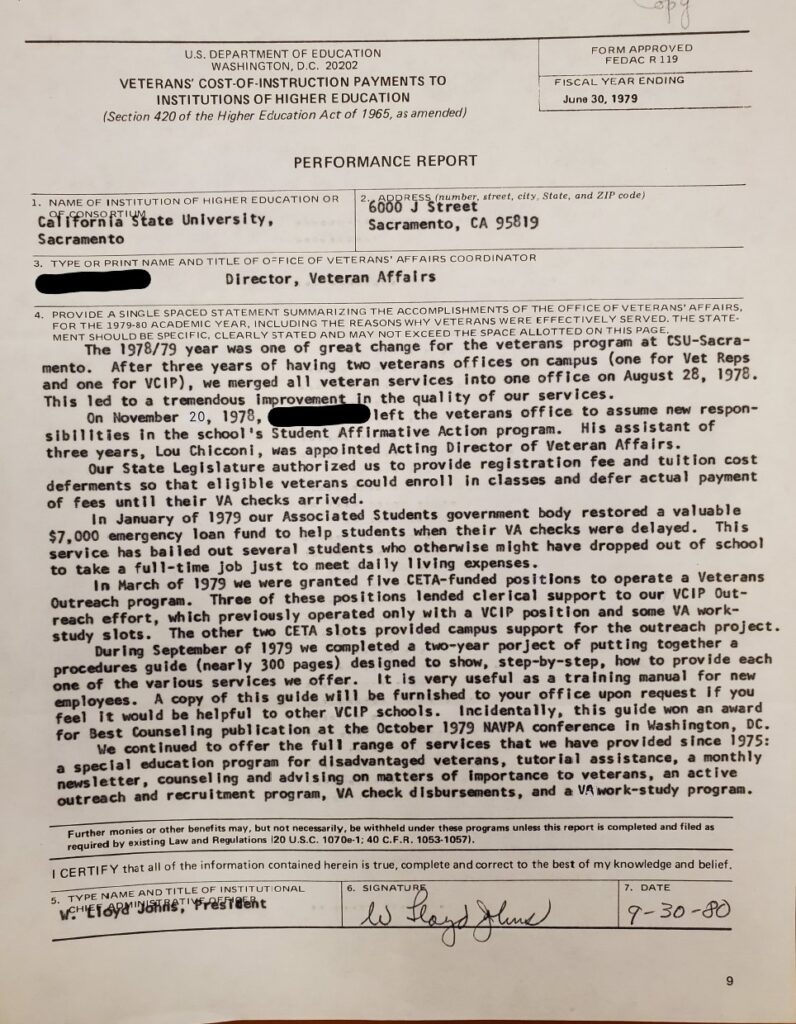
During the Vietnam War era, a large number of returning veterans were not using their education and training benefits compared to their WWII and Korean War brethren. In 1972, Congress enacted the Veterans’ Cost of Instruction Program (VCIP) to better facilitate VA education programs on college campuses and aid veterans trying to earn a college education. Sac State was one of over one thousand colleges across the nation that eagerly sought out the generous funding these grants provided and in September 1974 formally established their own veteran assistance centers on campus.
By the second year of operation, Sac State was in full swing running two veteran assistance centers. The school’s Veterans Affairs Office (VAO) helped students with applying for VA benefits, provided certification of enrollment, and coordinated work-study opportunities. The Veteran Services Center provided a whole host of services to current and potential student veterans including academic advising, tutoring, financial aid assistance, remedial education classes, counseling, work study opportunities, employment assistance, recreation activities, advocacy, and outreach activities.
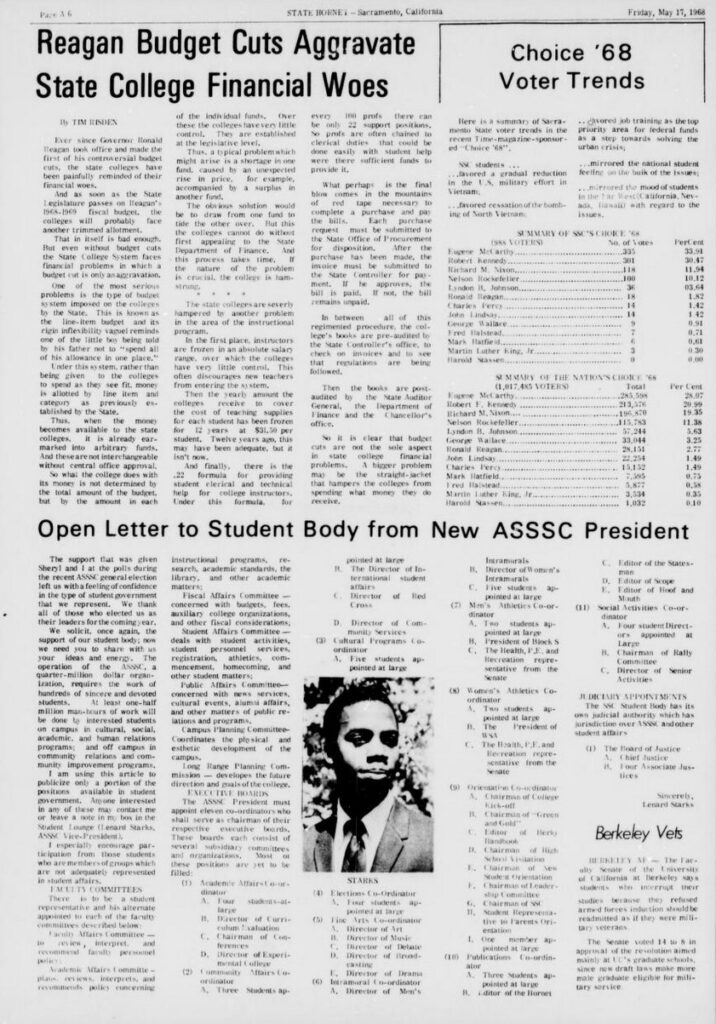
The Ronald Reagan presidency, continuing policies implemented during his time as governor of California, brought forth massive budget cuts and austerity measures across the country. This began a decades-long divestment of money for higher education at the federal and state level. Between 1980-2010, Sac State’s veteran population plummeted and, once again, so did available veteran services. But with the United States entering a decades long War on Terror following the terrorist attacks on September 11th, 2001, a new generation of wartime veterans was soon created. Sac State took the lead among their California State University peers in reviving their veteran assistance programs.
Despite being in the middle of a decades-long period of school budget funding austerity, Sac State President Alexander Gonzalez, himself a Vietnam-era Air Force veteran who went to college on the GI Bill, took on the challenge and made veterans a top priority for the school. Over the next five years, the school’s new Veterans Success Center moved from a hidden cubicle into a larger space. The new center offered a wide variety of services such as VA counseling, mentoring, career skills training, recreation activities, admissions, and academic advising.
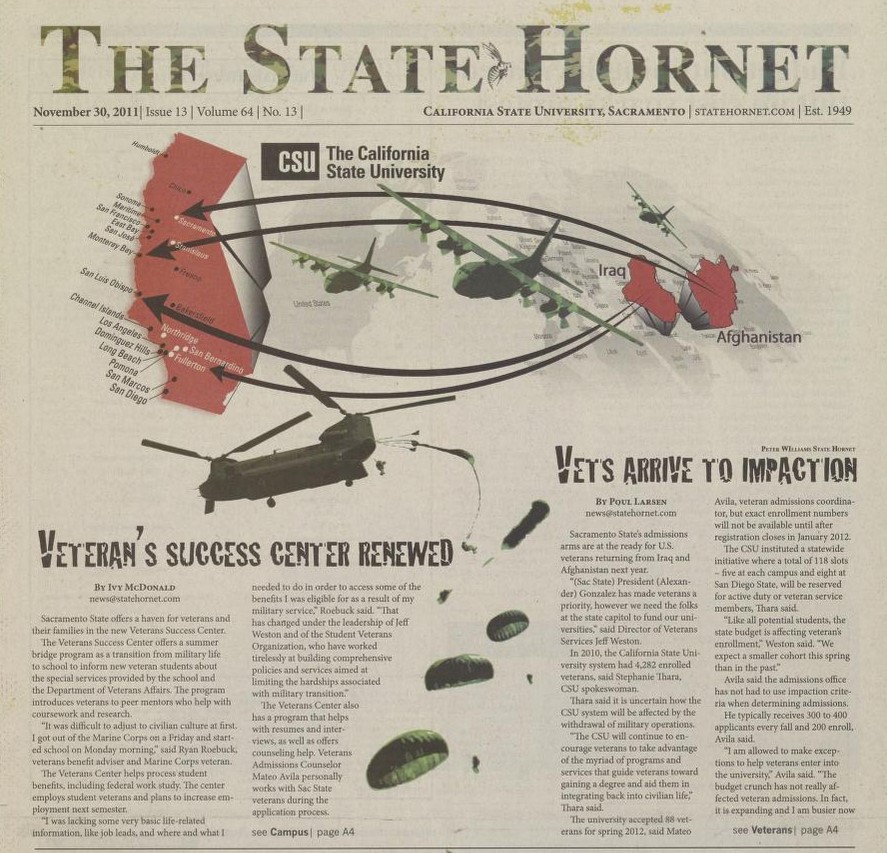
Unlike previous decades where Sac State let federal funding dictate the level of veterans services they provided, President Gonzalez, administrators from the school’s Veterans Affairs division, students, and even professors got out into the community to solicit funds for the Veterans Success Center. The University Foundation, originally created in part because of difficulties Sac State student veterans had in the early years to pay for their books, got the ball rolling by donating $25,000 and starting a campaign that ended up raising over $150,000 from individual donors. The American Council on Education and the Walmart Foundation donated $100,000. Wells Fargo Bank made multiple donations over the years totaling over $150,000, including another $10,000 donated by Wells Fargo customers.
The Veterans Success Center got off to a solid beginning those first few years and today is a model for all other California State Universities to emulate.

References:
Donald & Beverly Gerth Special Collections & University Archives, California State University, Sacramento.
The State Hornet. Accessed on Internet Archive.
Craft, Jr., George S. California State University, Sacramento: The First Forty Years: 1947-1987. Sacramento: The Hornet Foundation, 1987.
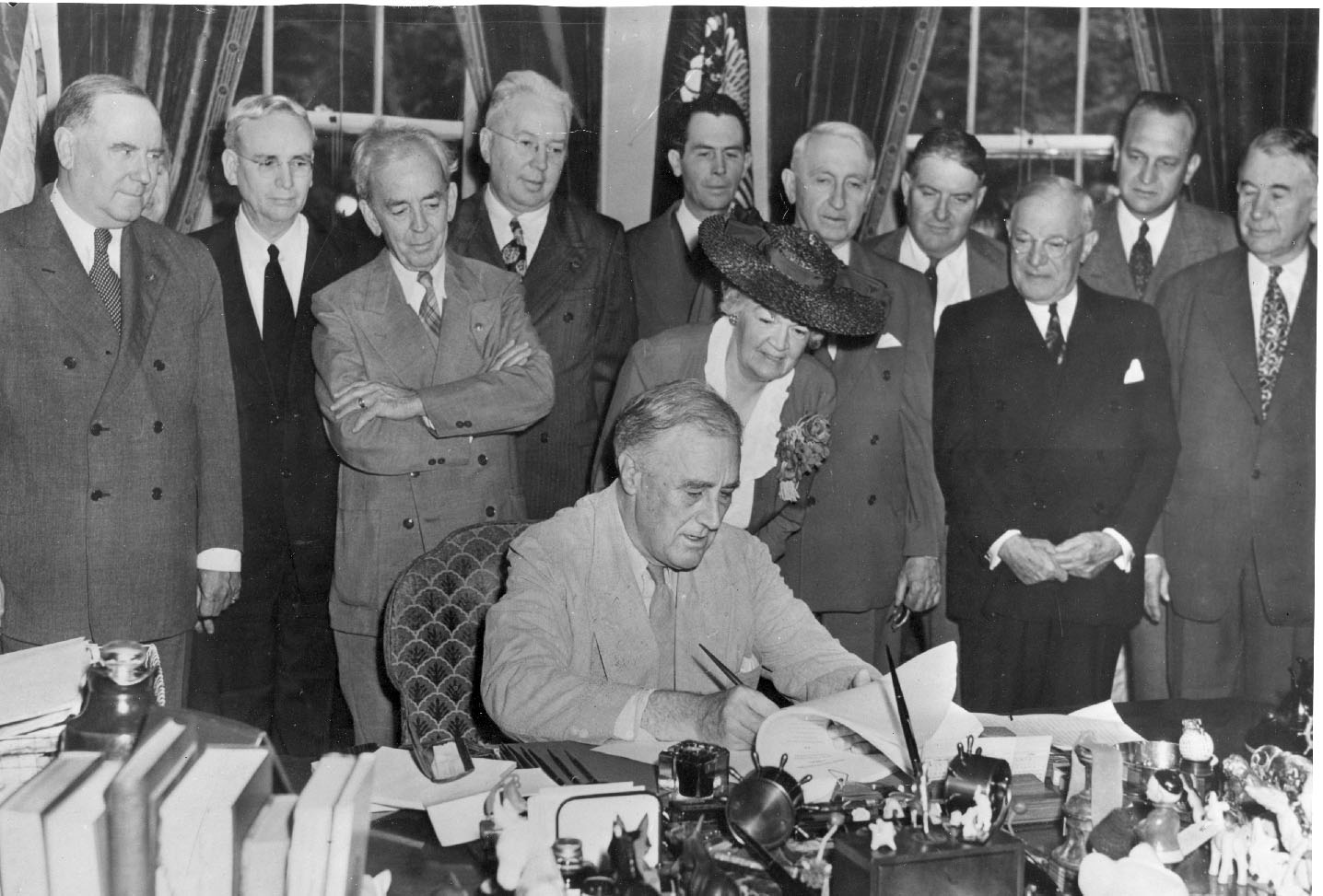
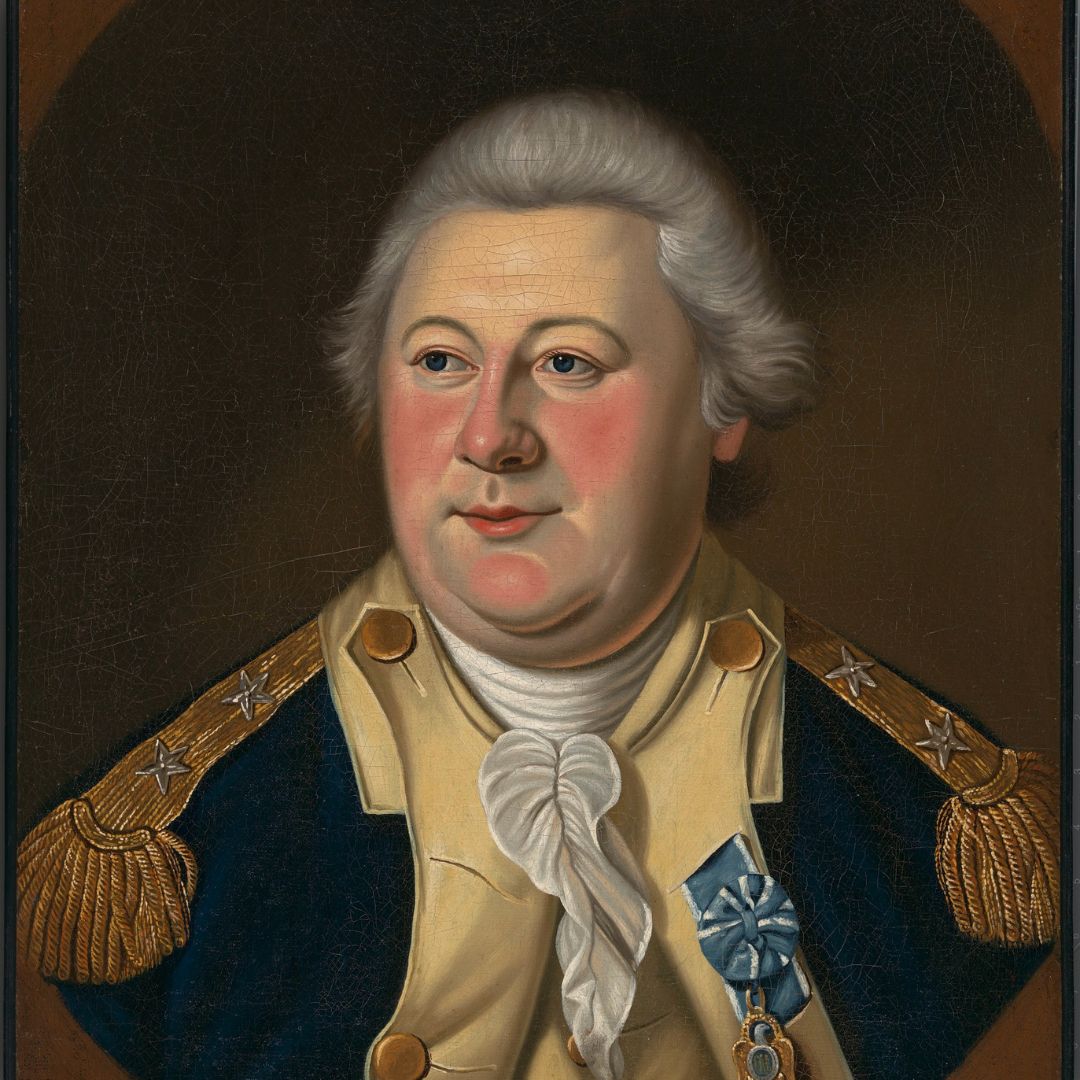
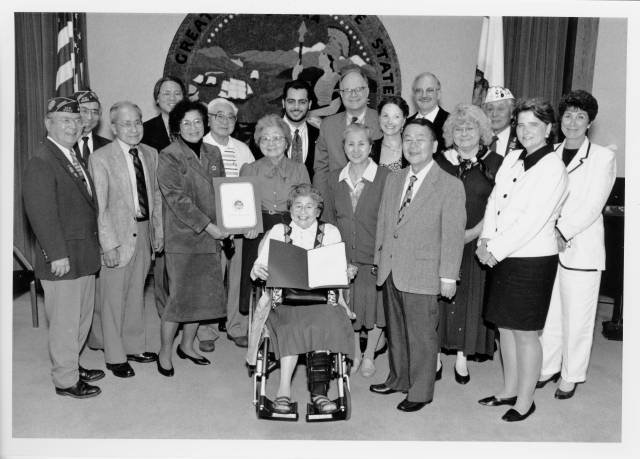
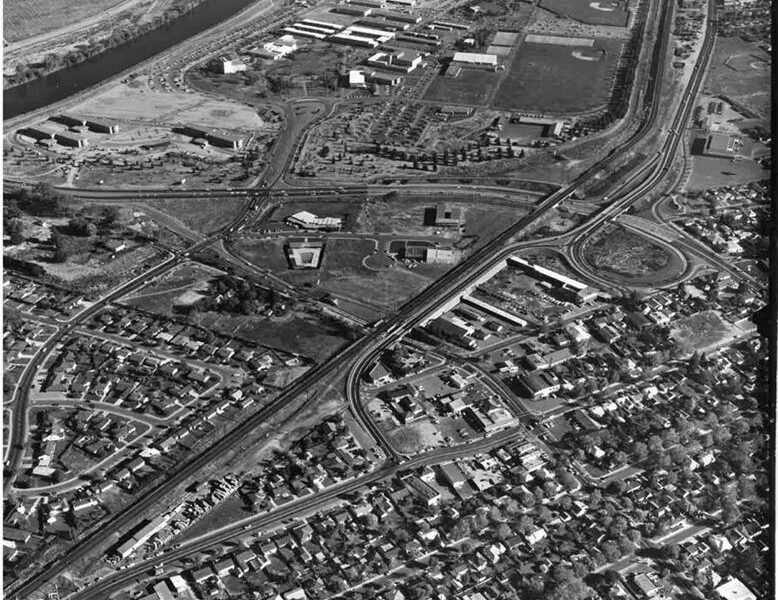
It is so amazing to hear about how hard the schiol has worked to help veterans get the education they deserve. I would have never known about how hard the school has worked to be a beacon of light for veterans and be a role model in showing other schools what thwy should aim to do at a minimum. This is such a cool little pop up.